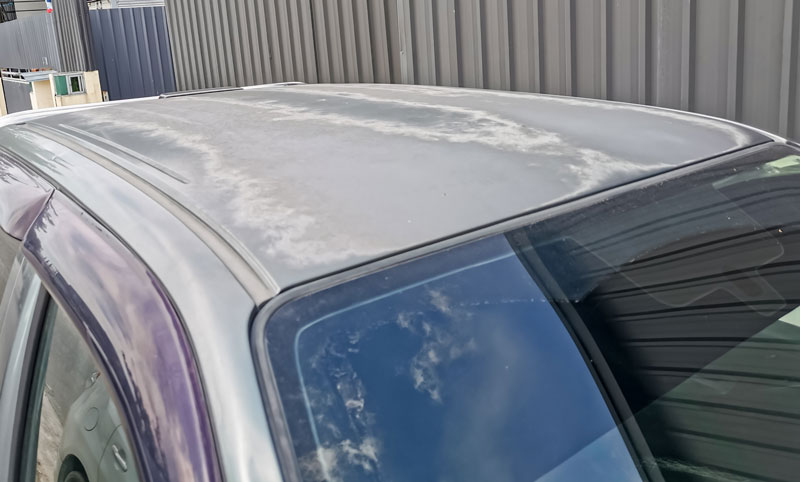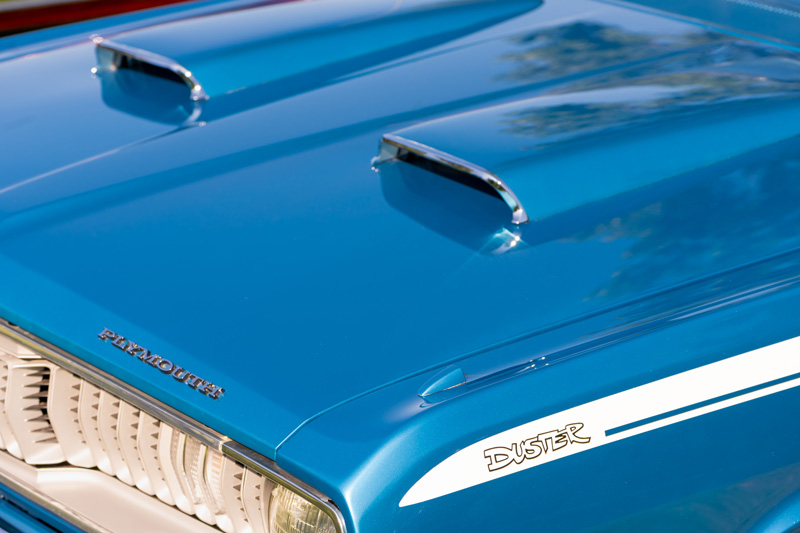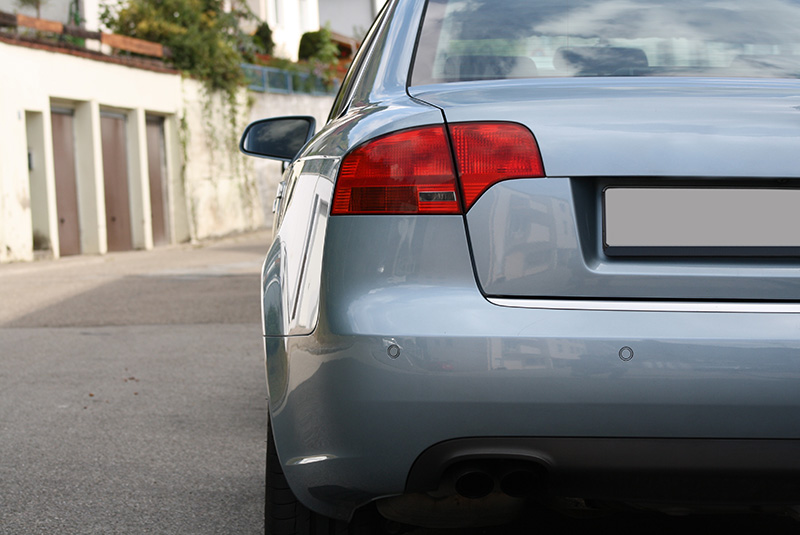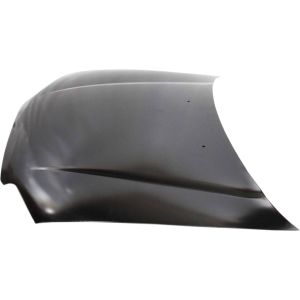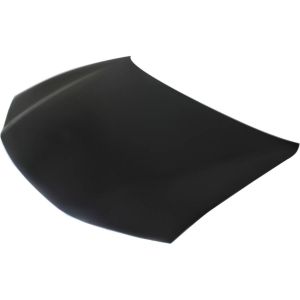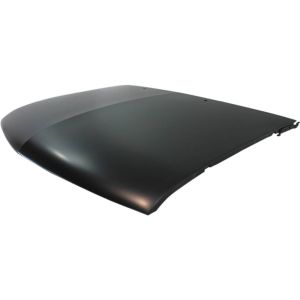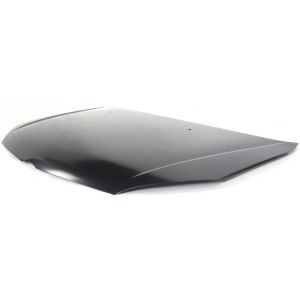Just like a beautifully penned book that loses its appeal with faded ink, your car, too can lose its charm with the fading paint on its hood. It's not just a cosmetic concern, but it also affects the value of your vehicle.
You might think it's a task for the professionals, and it's a common misconception. But what if you could fix the faded paint on your car's hood yourself? This isn't a promise of an overnight transformation, but a process that requires patience and effort.
Are you ready to roll up your sleeves and take the challenge?
Key Takeaways:
- Faded car paint can be caused by excessive UV rays, corrosion from saltwater, abrasive cleaners and chemicals, contaminants like bird droppings, and poor quality paint used by car manufacturers.
- UV rays from the sun are a major cause of paint fading, particularly on flat surfaces like the hood and roof. Clear coat protectants can help, but damage still occurs.
- Living near the coast can lead to corrosion and paint fading due to saltwater. This can cause oxidation, chipping, and peeling of the paint, and repainting may be necessary if the clear coat is severely damaged.
- The use of abrasive cleaners and chemicals can break down clear coats, so it is recommended to use pH neutral cleaners and avoid harsh, abrasive chemicals. Regular maintenance and paint protection products can help prevent fading from contaminants and pollution.
What Causes Car Paint to Fade?
You may have noticed your car's paint losing its shine and turning dull over time. This fading is often due to factors like excessive sunlight or UV rays, corrosive elements, abrasive cleaners, and airborne pollutants. Understanding these causes can help you take preventive measures to keep your car's paint looking fresh and vibrant.
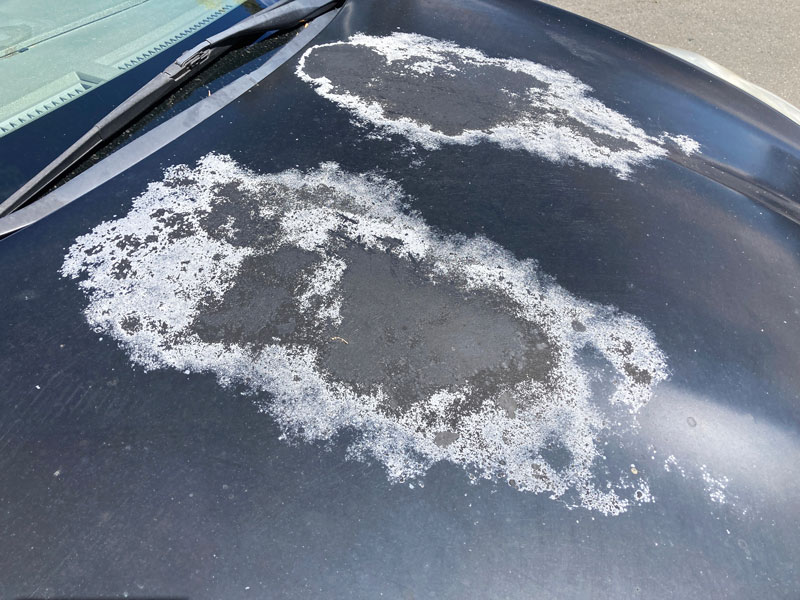
Sunlight or Uv Rays
One of the primary culprits for faded car paint is excessive exposure to sunlight, specifically harmful UV rays. Sunlight or UV rays can damage your car's exterior, causing the paint to fade over time.
This is particularly true if your car spends long periods parked outside without any protection. The UV rays break down the chemical bonds in the paint, leading to the dull, faded look you're trying to fix. But don't worry, there are ways to fix faded car paint caused by sunlight.
Regular washing and waxing can help protect your car's paint from the sun's rays. When the damage is already done, a good polishing and a new coat of paint can bring back your car's original shine.
Corrosion
Living near the coast, you're more likely to see corrosion and paint fading on your car, thanks to the damaging effects of saltwater. Saltwater is notorious for accelerating the corrosion process, which directly impacts your car paint.
Here's how corrosion affects your car:
- Saltwater can lead to oxidation, which gradually eats away at your car paint, causing it to fade.
- It can cause the paint to chip and peel, leaving the metal surface underneath exposed.
- Fixing faded car paint due to corrosion may involve a complete repainting if the damage is severe.
- Before repainting, you'd need to remove the old layer of paint completely.
Abrasive Chemicals and Cleaners
Beyond the damaging effects of sun and saltwater, your car's paint can also fade due to the use of abrasive chemicals and cleaners. Such substances can reduce the shine and color of your car's paint, making it look dull and faded.
Restoring faded paint involves careful selection of cleaning agents and techniques. Avoid cleaners that are overly acidic or alkaline, as they can harm the paint. Instead, opt for pH neutral products.
If your paint is already faded, you'll need a buffing compound. This product removes a thin layer of paint, revealing a fresher layer underneath. Apply it with a buffer in circular motions, but don't press too hard. Always follow up with a good wax to protect the new layer of paint.
Pollution and Contaminants
Pollution and airborne contaminants can wreak havoc on your car's paint, causing it to fade over time. These harmful elements can significantly accelerate the fading process, affecting the car's aesthetic appeal and potentially its resale value.
Here is what you need to know:
- Acid rain, industrial fallout, and smog are among the top pollutants that contribute to paint fade. These contaminants can penetrate the clear coating, prompting the need for car paint restoration.
- Bird droppings, bug splatters, and tree sap are common contaminants that can cause localized fading or discoloration on your car's paint.
- Harsh weather conditions, including extreme heat and cold, can also cause your car's paint to fade.
- Road salt, especially during winter, can lead to corrosion and fading of your car's paint.
Understanding these factors is crucial in taking preventative measures and maintaining the longevity of your car's paint.
Fixing Faded Car Paint
Now that you're aware of what causes your car paint to fade, it's time to tackle the solution - fixing the faded paint. First, you'll need to gather the right supplies and thoroughly wash your car.
Then, you'll learn how to remove any debris and kickstart the buffing compound process to restore your car's paint back to its former glory.
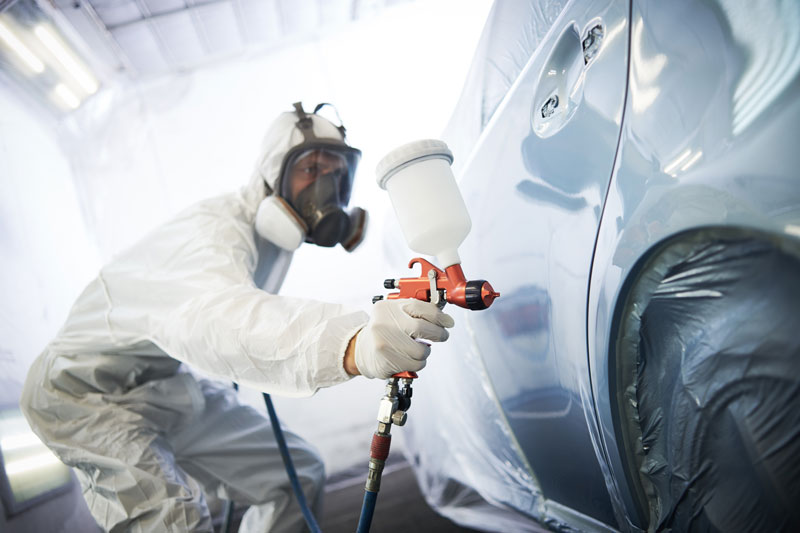
Gather Supplies
Ready to tackle that faded car paint? First, you'll need to gather the essential supplies. You won't need a garage full of tools, just a few key items.
Here's what you should have on hand:
- A good quality paint sealant: This will protect your newly refreshed paint from further fading and damage.
- Car wash soap and a sponge: You'll need to clean your entire car thoroughly before you start working on the paint.
- A dual-action polisher: This tool will help you buff out the fading car paint and apply the sealant evenly.
- Microfiber towels: These are great for drying your car and buffing the paint sealant.
With your supplies ready, you're one step closer to restoring your car's vibrant color.
Wash the Car
Wondering where to start with fixing that faded car paint? First off, you'll need to give your car a thorough wash. This step is crucial for car owners as it removes the grime, dust, and other contaminants that might interfere with the restoration of your paint job.
Start by rinsing your vehicle with water to dislodge any loose dirt. Then, use a high-quality car wash soap and scrub gently to avoid scratching the paint surface. Pay extra attention to the hood, as this area is the focus of your project.
Rinse off the soap thoroughly and dry the car using a clean, soft cloth. Ensure the car is completely dry before moving on to the next steps. A clean, dry paint surface sets the stage for a successful restoration.
Remove Debris
Once your car is spotless and dry, it's time to inspect the paintwork for any debris that might be stuck to the surface. This step is crucial in the process of fixing faded car paint as debris can cause further damage if not removed.
Here's how you can do it:
- Start by visually inspecting the entire car hood. Look for any spots or areas where debris might be stuck.
- Use a clay bar or a detailing brush to gently remove stubborn contaminants. This should be done with utmost care to avoid scratching the paintwork.
- For larger debris like leaves or twigs, use your hands to pick them off.
- Lastly, wipe the hood down with a microfiber towel to ensure it's completely clean.
Start the Buffing Compound
Now that your car's hood is clean and free of debris, it's time to bring out your buffing compound to start restoring the faded paint. You'll apply this compound using an electric machine buffer.
Choose a high-quality compound designed to restore faded paint. Put a small amount on your buffer pad and spread it evenly across the hood. Start the machine on a low setting, then gradually increase the speed, moving in small, circular motions. Do this until you notice the paint starting to shine again.
Remember, the goal is not to remove the paint, but to buff away the dull, faded layer. After the buffing process, wipe off any excess compound with a clean microfiber towel. This process can rejuvenate your car's appearance and protect the paint from further damage.
Is It Easy to Restore Faded Paint on Car Hood?
Despite the challenges, with the right tools and a bit of patience, you can restore faded paint on your car hood quite easily. The task may seem daunting at first, but it's really a matter of knowing the right steps to follow and having the necessary products at hand.
Here are the basic steps you need to follow:
- Wash and dry your car: This will remove dirt and grime that could scratch the paint during the restoration process.
- Apply a quality polishing compound: Use a buffer to apply the compound in circular motions. This will remove the faded layer of paint.
- Wipe off the compound: Use a clean microfiber cloth to wipe off the compound, revealing the restored paint underneath.
- Apply a coat of wax or paint sealant: This will protect the newly restored paint from future damage and fading.
How to Protect From Future Paint Fading Issues?
To prevent future paint fading issues, it's crucial to regularly maintain and protect your car's paint job. The sun's harmful UV rays are a leading cause of paint fade. So, park your vehicle in the shade or in a garage whenever possible. If that's not feasible, consider getting a car cover.
Invest in high-quality car wash products that are pH balanced. They're less harsh on your car's paint and can help maintain its shine. Avoid automatic car washes as they can scratch your paint and speed up the fading process.
Remember to wax your car at least twice a year. Waxing not only gives your car a glossy shine but also acts as a barrier against UV rays, pollution, and other damaging elements.
Conclusion
And there you have it, folks! Like a phoenix rising from the ashes, your car hood can reclaim its lost glory. It's not rocket science, just a bit of elbow grease and know-how.
Remember, prevention is key, so keep up with regular maintenance to ward off future fading. Now, go out there, restore that shine, and let your car hood turn heads once again!
FAQs (Frequently Asked Questions)
How Long Does the Process of Fixing Faded Car Paint Typically Take?
- Depending on the severity of the damage, it'd typically take you a few hours to a full day to fix faded car paint. However, if you're doing a complete restoration, it could take several days.
What Are the Potential Costs Involved in Fixing Faded Car Paint?
- You'd typically spend between $500 to $5000 on a professional paint job. Factors influencing cost include the car's size, type of paint, and labor rates in your area. DIY methods can be significantly cheaper.
How Often Should I Apply Paint Protection Products to Prevent Future Fading?
- You should apply paint protection products every three to six months. Frequency depends on product type, weather conditions, and your car's exposure to elements. Regular application will help prevent future paint fading.
